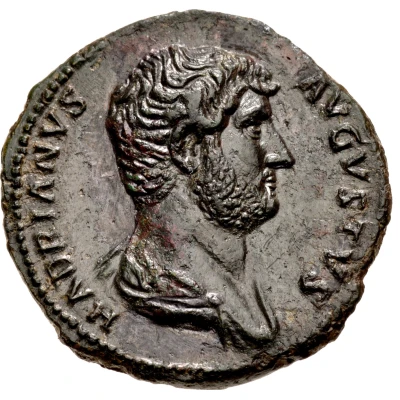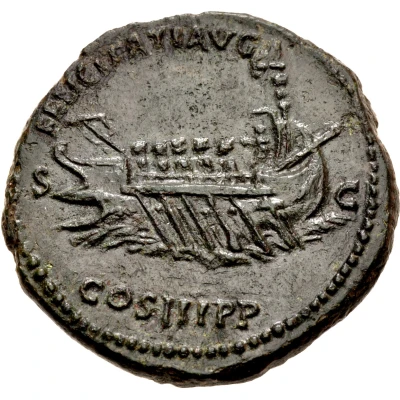Dupondius or As - Hadrian FELICITATI AVG COS III P P S C
| Orichalcum | - | - |
| Issuer | Rome › Roman Empire (27 BC - 395 AD) |
|---|---|
| Emperor | Hadrian (Publius Aelius Hadrianus) (117-138) |
| Type | Standard circulation coin |
| Years | 129-130 |
| Currency | Denarius, Reform of Augustus (27 BC – AD 215) |
| Composition | Orichalcum |
| Shape | Round (irregular) |
| Technique | Hammered |
| Demonetized | Yes |
| Updated | 2024-10-05 |
| Numista | N#255805 |
|---|---|
| Rarity index | 100% |
Reverse
Ship, left; Minerva Promachus, Triton, or Pegasus as figurehead.
Script: Latin
Lettering:
FELICITATI AVG COS III P P
S C
Translation:
Felicitati Augusti, Consul Tertium, Pater Patriae. Senatus Consultum.
To the good fortune of the emperor (Augustus), consul for the third time, father of the nation. Decree of the senate.
Comment
Source: Online Coins of the Roman Empire (OCRE)Interesting fact
The Dupondius or As coin featuring Emperor Hadrian (FELICITATI AVG COS III P P S C) (129-130) from Rome › Roman Empire (27 BC - 395 AD) made of Orichalcum is interesting because it showcases the advanced metallurgical skills of the ancient Romans. Orichalcum, also known as "golden bronze," was a prized alloy of copper, zinc, and sometimes small amounts of gold or silver, which was used to create coins with a golden appearance. The use of this alloy for coins was a significant technological achievement at the time and speaks to the Roman Empire's expertise in metallurgy and minting technology.

